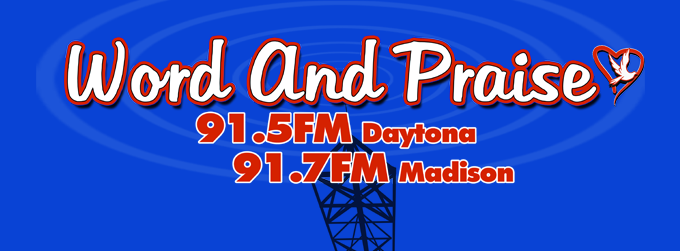What is Radio?
Radio is the only medium that reaches people in their cars. 95% of all cars have a radio. There are 180-million car radio’s—-79% of adults are reached weekly by car radios. WAPN 91.5 FM went on the air as a new radio station in September of 1985, licensed to Public Radio, In, and is licensed to the city of Holly Hill, Florida. We are able to saturate the Daytona Beach, Ormond Beach, Flagler and New Smyrna Beach and surrounding areas with the Gospel 24 hours a day in stereo. We operate with 1800 watts of power to a heavily populated area
Radio is extremely effective… Especially in recession.
Radio is inexpensive. Radio has the ability to pass through doors, walls, windows, cars and to pierce minds. The fact alone that radio is the only medium that can reach people in their cars makes it extremely effective for Churches and businesses to be underwriters of this station. Radio’s best point is that people don’t have “earlids.”
Radio delivers prime consumers: 79% of college graduates and
persons with an annual income over $50,000 listen to radio every day.
WAPN is a listener supported and is a non commercial radio station.
What is Non -commercial ?
A noncommercial radio facility operates on the basis of “free from commercial ” And commercial stations make no bones about generating their income from the sale of commercial time. Today that has all changed. Non -comercial stations are selling “support promotion announcements and commercial stations hold “sharathons”to generate income! The reason this line of definition ads changed is largely economic. To meet the financial needs, many noncommercial stations have implemented the following:1.Setting a “service fee” charged to program producers tied to the stations operation. It has the same look and feel as a commercial station’s rate card. The only difference between the two is that ne, is based on audience(commercial ), the other on the cost of the operation (noncommercial) 2. Sponsorship for which, in return, a local donor or Christian businessman receives a certain number of “spots” to be aired ROS. Once again, this concept is alarmingly similar to a flight of spots adjacent to the favorite broadcast. Not many years ago both of these practices were taboo.
On noncommercial stations, it is well within the law for a not for profit organization to “sell” product, use an 800 number, mention specific dollar amounts, and make a direct plea for funds. The Key issue from another not for profit organization. Noncommercial radio stations generally fall into three categories:
- Those which ask for a fee from program producers
- Who agree to partner with a broadcaster in the expense share income
- Those who charge nothing for being a part of their program.
Service fees or cost of services usually replace Sharathons as the stations needs are met through programming & local Churches.
Keep us in your prayers as we continue to broadcast
